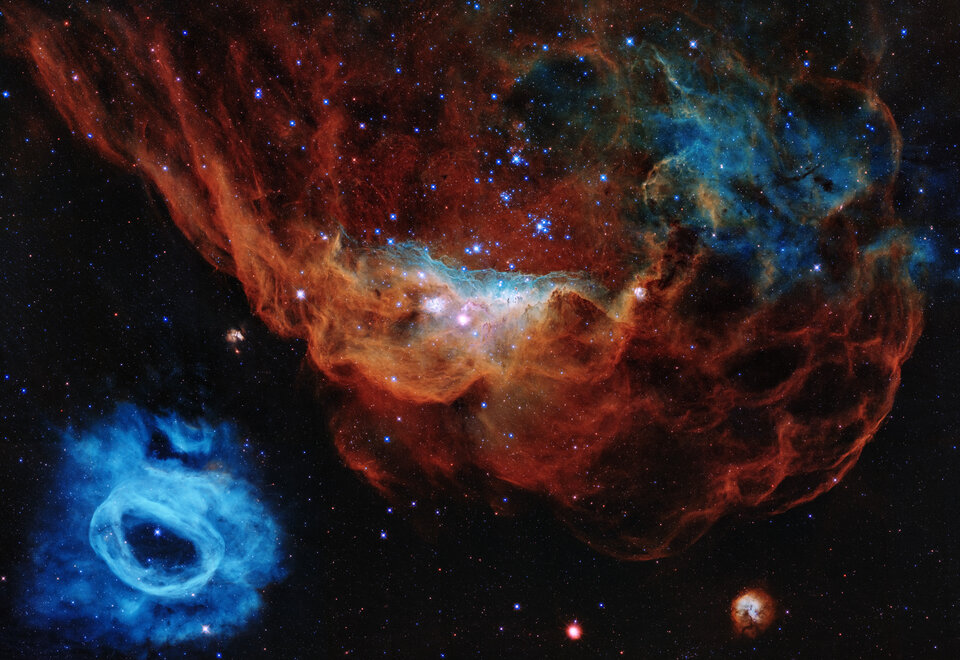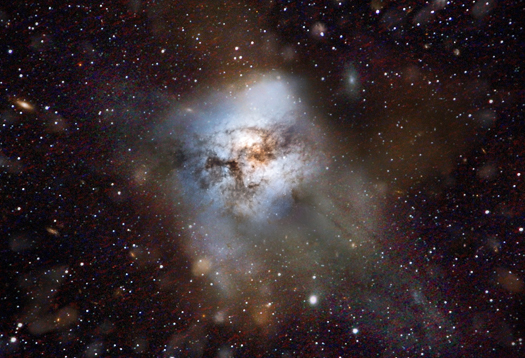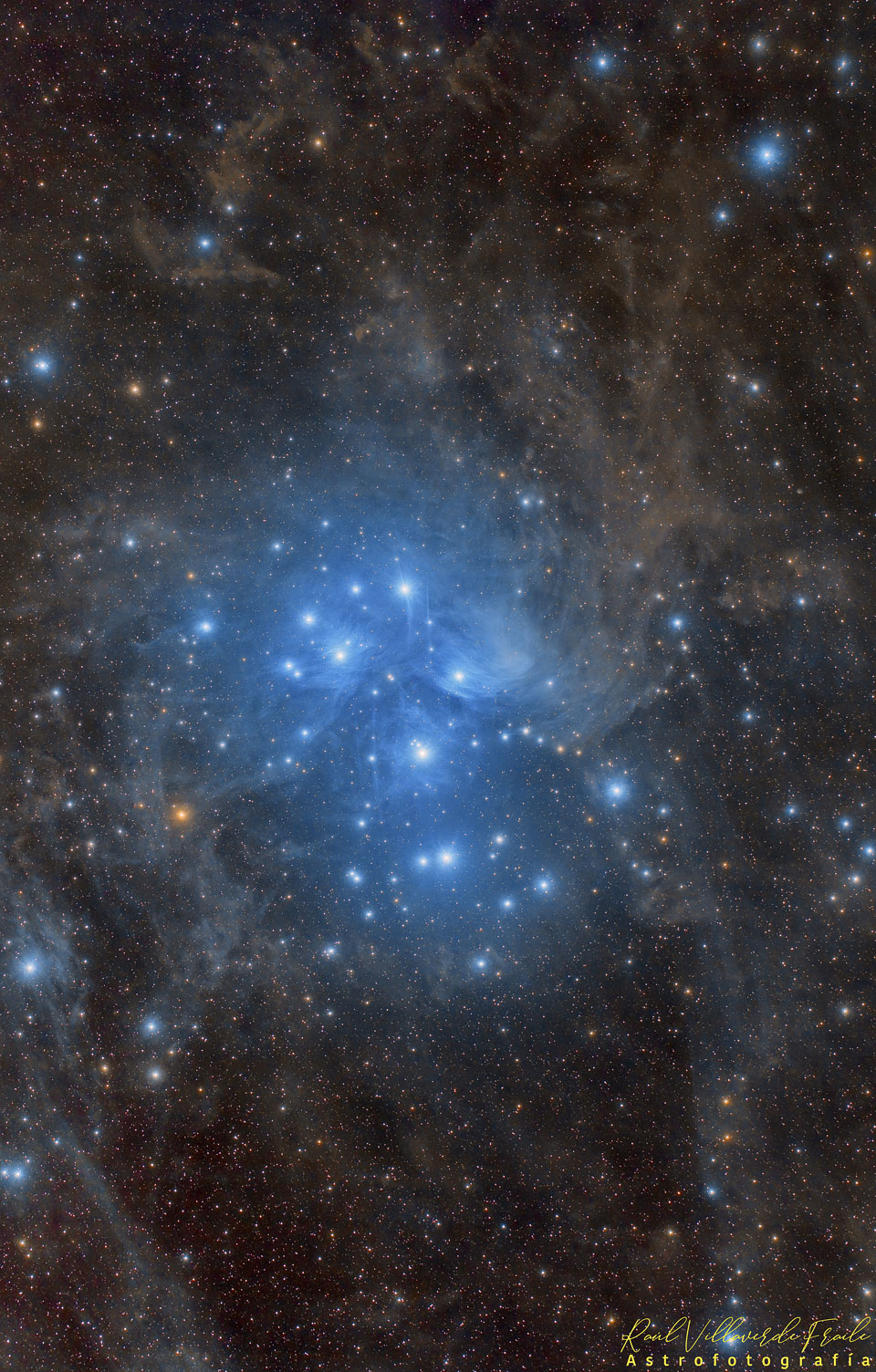Blog
The portrait features the giant nebula NGC 2014 and its neighbour NGC 2020 which together form part of a vast star-forming region in the Large Magellanic Cloud, a satellite galaxy of the Milky Way, approximately 163 000 light-years away. The image is nicknamed the ‘Cosmic Reef’ because it resembles an undersea world. This image is one of the most photogenic examples of the many turbulent stellar nurseries the NASA/ESA Hubble Space Telescope has observed during its 30-year lifetime. The portrait features the giant nebula NGC 2014 and its neighbour NGC 2020 which together form part of a vast star-forming region in the Large Magellanic Cloud, a satellite galaxy of the Milky Way, approximately 163 000 light-years away.

Victor Lemonte Wooten (born September 11, 1964) is an American bassist, record producer, educator, and recipient of five Grammy Awards. He has been the bassist for Béla Fleck and the Flecktones since the group’s formation in 1988 and a member of the band SMV with two other bassists, Stanley Clarke and Marcus Miller. Since 2017 he has played bass for the metal band Nitro.
He owns Vix Records which releases his albums. He wrote the novel The Music Lesson: A Spiritual Search for Growth Through Music.
Wooten has won the Bass Player of the Year award from Bass Player magazine three times and is the first person to win the award more than once. In 2011, he was ranked No. 10 in the Top 10 Bassists of All Time by Rolling Stone magazine.
Born to Dorothy and Elijah Wooten, Victor is the youngest of the five Wooten Brothers; Regi, Roy, Rudy and Joseph Wooten, all of whom are musicians. Regi began to teach Victor to play bass when he was two, and by the age of six, he was performing with his brothers in their family band, The Wooten Brothers Band. As a United States Air Force family, they moved often when Wooten was young. The family settled in Newport News, Virginiain 1972. Wooten graduated from Denbigh High School in 1982. While in high school, he and his brothers played in the country music venue at Busch Gardens theme park in Williamsburg, Virginia. In 1987, he traveled to Nashville, Tennessee, to visit friends that he made at the theme park. One of them was a studio engineer who introduced him to Béla Fleck, with whom he has often collaborated.
more...Mickey Hart (born Michael Steven Hartman, September 11, 1943) is an American percussionist and musicologist. He is best known as one of the two drummers of the rock band Grateful Dead. He was a member of the Grateful Dead from September 1967 until February 1971, and again from October 1974 until their final show in July 1995. He and fellow Dead drummer Bill Kreutzmann earned the nickname “the rhythm devils”.
Michael Steven Hartman was born in Flatbush neighborhood of Brooklyn, New York. He was raised in suburban Inwood, New York by his mother, Leah, a drummer, gown maker and bookkeeper. His father Lenny Hart, a champion rudimental drummer, had abandoned his family when the younger Hart was a toddler. Although Hart (who was hyperactive and not academically inclined) became interested in percussion as a grade school student, his interest intensified after seeing his father’s picture in a newsreel documenting the 1939 World’s Fair. Shortly thereafter, he discovered a practice pad and a pair of snakewood sticks that belonged to his father. “From the age of ten,” he recalled, “all I did was drum.”
https://www.youtube.com/watch?v=3vfRwxB249E
more...Leo Kottke (born September 11, 1945) is an acoustic guitarist. He is known for a fingerpicking style that draws on blues, jazz, and folk music, and for syncopated, polyphonic melodies. He overcame a series of personal obstacles, including partial loss of hearing and a nearly career-ending bout with tendon damage in his right hand, to emerge as a widely recognized master of his instrument. He currently resides in the Minneapolis area with his family.
Focusing primarily on instrumental composition and playing, Kottke also sings sporadically, in an unconventional yet expressive baritone described by himself as sounding like “geese farts on a muggy day”. In concert, Kottke intersperses humorous and often bizarre monologues with vocal and instrumental selections from throughout his career, played solo on 6- and 12-string guitars.
Born in Athens, Georgia, Kottke moved with his parents so frequently that he was raised in twelve different states. As a youth living in Muskogee, Oklahoma, he was influenced by folk and delta blues music, notably that of Mississippi John Hurt. Kottke learned to play trombone and violin before trying the guitar and developing his own unconventional picking style.
more...Oliver Theophilus Jones, OC CQ (born September 11, 1934 in Little Burgundy, Montreal, Quebec) is a Canadian jazz pianist, organist, composer and arranger.
Born to Barbadian parents, Oliver Jones began his career as a pianist at the age of five, studying with Mme Bonner in Little Burgundy’s Union United Church, made famous by Trevor W. Payne‘s Montreal Jubilation Gospel Choir. He continued to develop his talent through his studies with Oscar Peterson‘s sister Daisy Peterson Sweeney starting at eight years old. In addition to performing at Union United Church when he was a child, he also performed a solo novelty act at the Cafe St. Michel as well as other clubs and theaters in the Montreal area. “I had a trick piano act, dancing, doing the splits, playing from underneath the piano, or with a sheet over the keys.”
He started his early touring in Vermont and Quebec with a band called Bandwagon, and in 1953–63 played mainly in the Montreal area, with tours in Quebec.
more...Roosevelt “Baby Face” Willette (September 11, 1933 – April 1, 1971) was a hard bop and soul-jazz musician who played the Hammond organ. It is unclear whether he was born in Little Rock, Arkansas, or New Orleans, Louisiana.His mother was a missionary who played the piano in the church where his father was a minister. As a result, his musical roots were in gospel and Willette became involved in music by playing the piano for various gospel groups, and spent his early career travelling across the United States, Canada and Cuba. In Chicago, he decided to switch from gospel and rhythm and blues to playing in jazz bands. He played piano with the bands of King Kolax, Joe Houston, Johnny Otis and Big Jay McNeely before switching to organ. He also played piano and organ at a neighborhood lounge on the west side of Chicago, the Squeeze Club on 16th. & Homan. In 1960, he arrived in New York City where he met Lou Donaldson and Grant Green, and played on a few Blue Note sessions with them. This led to Willette being signed to Blue Note, which recorded his debut album Face to Face in 1961. Willette formed his own trio in 1963 and recorded two more albums for Argo.
Willette taught himself to play the piano. His organ playing was inspired by Jimmy Smith‘s work, though Willette’s style is more heavily influenced by gospel and soul jazz than Smith’s. Willette was also a professional hairdresser. Before his time in New York City, he was based out of Milwaukee, playing with his vocalist wife Jo Gibson at clubs such as The Flame Club, The Pelican Club, The Moonglow and Max’s among others. After stints in New York City, and then California, failing health forced a return to Chicago, where his family resided. He died in 1971.
more...Arp 220 appears to be a single, odd-looking galaxy, but is in fact a nearby example of the aftermath of a collision between two spiral galaxies. It is the brightest of the three galactic mergers closest to Earth, about 250 million light-years away in the constellation of Serpens, the Serpent. The collision, which began about 700 million years ago, has sparked a cracking burst of star formation, resulting in about 200 huge star clusters in a packed, dusty region about 5,000 light-years across (about 5 percent of the Milky Way’s diameter). The amount of gas in this tiny region equals the amount of gas in the entire Milky Way Galaxy. The star clusters are the bluish-white bright knots visible in the Hubble image. Arp 220 glows brightest in infrared light and is an ultraluminous infrared galaxy. Previous Hubble observations, taken in the infrared at a wavelength that looks through the dust, have uncovered the cores of the parent galaxies 1,200 light-years apart. Observations with NASA’s Chandra X-ray Observatory have also revealed X-rays coming from both cores, indicating the presence of two supermassive black holes. Arp 220 is the 220th galaxy in Arp’s Atlas of Peculiar Galaxies. This image is part of a large collection of 59 images of merging galaxies taken by the Hubble Space Telescope and released on the occasion of its 18th anniversary on 24th April 2008.

Roy Ayers (born September 10, 1940) is an American funk, soul, and jazz composer, vibraphone player, and music producer. Ayers began his career as a post-bop jazz artist, releasing several albums with Atlantic Records, before his tenure at Polydor Records beginning in the 1970s, during which he helped pioneer jazz-funk. He is a key figure in the acid jazz movement, and has been dubbed “The Godfather of Neo Soul”. He is best known for his compositions “Everybody Loves the Sunshine”, “Searchin”, and “Running Away”. At one time, he was said to have more sampled hits by rappers than any other artist.
https://www.youtube.com/watch?v=1cfW_gfV9EA
more...William B. Lawsha, better known as Prince Lasha (pronounced “La-shay“), (September 10, 1929 – December 12, 2008) was an American jazzalto saxophonist, flautist, and clarinetist.
He was born in Fort Worth, Texas, where he came of age studying and performing alongside fellow I.M. Terrell High School students John Carter, Ornette Coleman, King Curtis, Charles Moffett, and Dewey Redman.
more...Roy James Brown (September 10, 1920 or 1925 – May 25, 1981) was an American R&B singer, songwriter and musician, who had a significant influence on the early development of rock and roll and the direction of R&B. His original song and hit recording “Good Rockin’ Tonight” has been covered by many artists including Wynonie Harris, Elvis Presley, Bruce Springsteen, Joe Ely, Ricky Nelson, Jerry Lee Lewis, Pat Boone, James Brown, the Doors, and the rock group Montrose. Brown was one of the first popular R&B singers to perform songs with a gospel-steeped delivery, which was then considered taboo by many churches. In addition, his melismatic, pleading vocal style influenced notable artists such as B.B. King, Bobby Bland, Elvis Presley, Jackie Wilson, James Brown and Little Richard.
Brown was born in Kinder, Louisiana. Some sources report his birth date as September 10, 1925, but the researchers Bob Eagle and Eric LeBlanc gave the date as September 10, 1920, on the basis of information in the 1930 census and Social Security records, and stated that 1925 is incorrect. Media reports state that he was either 55 or 56 at the time of his death.
more...Perhaps the most famous star cluster on the sky, the bright stars of the Pleiades can be seen without binoculars from even the depths of a light-polluted city. With a long exposure from a dark location, though, the dust cloud surrounding the Pleiades star cluster becomes very evident. The featured exposurecovers a sky area several times the size of the full moon. Also known as the Seven Sisters and M45, the Pleiades lies about 400 light years away toward the constellation of the Bull (Taurus). A common legend with a modern twist is that one of the brighter stars faded since the cluster was named, leaving only six of the sister stars visible to the unaided eye. The actual number of Pleiades stars visible, however, may be more or less than seven, depending on the darkness of the surrounding sky and the clarity of the observer’s eyesight.

David Sánchez (born 9 September 1968 in Guaynabo, Puerto Rico) is a Grammy-winning jazz tenor saxophonist from Puerto Rico.
Sanchez took up the conga when he was eight and started playing tenor saxophone at age 12. His earliest influences were Afro-Caribbean and danzabut also European and Latin classical. At 12 Sanchez attended La Escuela Libre de Musica, which emphasized formal musical studies and classical European styles and was much taken with a Miles Davis album, Basic Miles, featuring John Coltrane, as well as Lady in Satin, a 1958 album by Billie Holiday with strings, arranged and conducted by Ray Ellis. Sanchez considered a college career in psychology but auditioned at Berklee and Rutgers University. Sanchez chose Rutgers because he got a better scholarship and was near New York which was Sanchez’ goal. While at Rutgers, Sanchez studied with Kenny Barron, Ted Dunbar, and John Purcell.
https://www.youtube.com/watch?v=8sh8h-csB8k
more...More Posts
- Antonio Carlos Jobim
- Moses “Whispering” Smith
- Giorgos Zampetas
- Floyd George Smith
- Benny Golson
- Sleepy John Estes
- World Music ShunTA
- Daily Roots Singie Singie
- Little Shop of Horrors 2025
- Nina Simone Freedom
- Temple Israel Nefesh Erev Shabbat Service
- Cosmo NGC 2244
- Joe Albany
- Aaron Neville
- Jimmy Forrest
- Flamenco Fridays Sabicas
- Daily Roots Upsetters
- Respect Everyone
- Fauci Career Goal
- Cosmo NGC 7814

